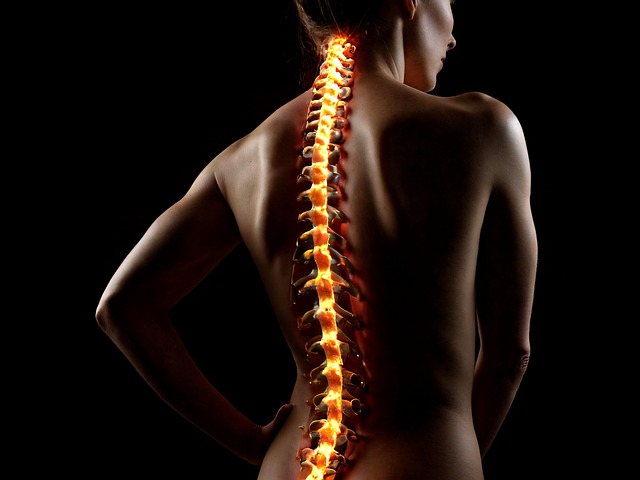PTSD, a severe mental health condition prevalent among military veterans, is characterized by flashbacks, nightmares, anxiety, and mood swings, significantly impairing daily life. Early intervention with evidence-based therapies like Cognitive Processing Therapy (CPT), Prolonged Exposure (PE) therapy, Eye Movement Desensitization and Reprocessing (EMDR), and CBT is crucial for healing. EMDR, in particular, uses bilateral stimulation to reprocess traumatic memories, offering relief from symptoms. Group therapy provides a supportive community, while holistic practices like yoga and meditation offer alternative coping strategies. Accessing specialized PTSD treatment facilities and services through military-specific channels is vital for effective care and reintegration into civilian life.
“Military veterans often face unique challenges upon returning home, with Post-Traumatic Stress Disorder (PTSD) being a prevalent issue. This comprehensive guide explores effective PTSD treatment strategies specifically tailored for military personnel. We delve into the profound impact of PTSD on veterans’ lives and present evidence-based therapies like Cognitive Behavioral Therapy (CBT) and Eye Movement Desensitization and Reprocessing (EMDR). Additionally, we discuss group therapy’s power in building support networks and introduce holistic practices for complementary healing. Accessing resources and facilities dedicated to PTSD treatment is also covered.”
Understanding PTSD in Military Veterans: Symptoms and Impact

PTSD, or Post-Traumatic Stress Disorder, is a common and severe condition that can affect military veterans after experiencing or witnessing traumatic events during their service. This mental health disorder occurs when an individual’s response to trauma disrupts their ability to function and cope with daily life. Veterans exposed to intense combat situations often face flashbacks, nightmares, heightened anxiety, and rapid mood changes as symptoms of PTSD.
The impact of this condition can be profound and long-lasting. It may lead to social withdrawal, difficulty concentrating, and an increased risk of substance abuse. Without proper support and PTSD treatment, veterans might struggle with relationships, employment, and overall quality of life. Recognizing the signs and providing accessible and effective PTSD treatment is crucial in helping military veterans navigate their journey towards healing and recovery.
The Role of Counseling in PTSD Treatment: Effective Therapies

Counseling plays a pivotal role in the effective PTSD treatment for military veterans, offering them a safe space to process their traumatic experiences and work towards healing. Through various therapeutic approaches, counselors help individuals develop coping strategies to manage symptoms like flashbacks, nightmares, and severe anxiety. One of the most successful therapies is Cognitive Processing Therapy (CPT), which aids patients in identifying and modifying negative thoughts and beliefs arising from the trauma. Another evidence-based method, Prolonged Exposure (PE) therapy, involves gradual exposure to traumatic memories in a controlled environment, helping veterans confront and overcome their fears.
Additionally, Eye Movement Desensitization and Reprocessing (EMDR) has gained recognition for its effectiveness in treating PTSD. This therapy encourages clients to recall traumatic events while simultaneously engaging in bilateral stimulation, such as side-to-side eye movements or taps. EMDR facilitates the processing of repressed memories and emotions, allowing individuals to heal from deep-seated trauma. These counseling techniques, among others, offer valuable tools for military personnel to navigate their PTSD journey, ultimately improving their overall well-being and quality of life.
Cognitive Behavioral Therapy (CBT): A Focused Approach

Cognitive Behavioral Therapy (CBT) is a highly effective and structured approach within the realm of PTSD treatment. This therapy focuses on identifying and modifying negative thought patterns and behaviors that contribute to post-traumatic stress disorder symptoms. By challenging unhelpful cognitions, CBT empowers individuals to develop healthier coping mechanisms and reduce the impact of traumatic memories. Through this process, veterans can learn to manage their symptoms, regain control over their lives, and improve overall well-being.
The structured nature of CBT makes it a preferred method for treating PTSD, as it provides clear goals and actionable strategies. Therapists work closely with clients to identify specific triggers and develop personalized plans to address them effectively. This focused approach allows for measurable progress, enabling veterans to track their healing journey. As they gain insights into their thoughts and behaviors, they can gradually rebuild their lives after experiencing the challenges of military service.
Eye Movement Desensitization and Reprocessing (EMDR): Unraveling Trauma Memories

Eye Movement Desensitization and Reprocessing (EMDR) is a groundbreaking approach in PTSD treatment, offering a way to unravel and process traumatic memories. This therapy technique involves guiding patients through bilateral stimulation, often with side-to-side eye movements, while they recall distressing events. The process helps desensitize individuals to these memories, reducing their emotional intensity over time. By reprocessing the trauma, patients can gain new perspectives, work through associated beliefs and feelings, and ultimately find relief from PTSD symptoms.
EMDR therapy has gained recognition for its effectiveness in treating complex traumas, allowing individuals to heal from deep-seated psychological wounds. It provides a safe space for veterans and active-duty military personnel to confront their traumatic experiences and start the journey towards recovery. With EMDR, patients can move beyond their past struggles and develop healthier coping mechanisms, leading to improved overall well-being.
Group Therapy for Military PTSD: Building Support Networks

Group therapy plays a pivotal role in PTSD treatment for military service members, offering a unique and powerful tool to combat the invisible scars of trauma. By facilitating a sense of community among individuals facing similar challenges, group therapy sessions create a safe space where veterans can share their experiences, connect with peers, and build supportive networks. This collective environment encourages open dialogue, fosters understanding, and helps break down the isolation often associated with PTSD.
In these therapeutic groups, participants engage in collaborative discussions, psychoeducation, and various evidence-based techniques. They learn from one another, gain valuable coping strategies, and develop a deeper sense of belonging. The group dynamic allows individuals to realize they are not alone in their struggles, promoting healing and resilience. This supportive network can significantly contribute to the long-term management of PTSD symptoms, offering a sense of camaraderie and continued support as veterans navigate their journey towards recovery.
Alternative Holistic Practices: Complementary Healing Methods

Many veterans and active-duty military personnel are turning to alternative, holistic practices as a complementary approach to traditional PTSD treatment. These methods offer a unique perspective on healing by addressing the mind, body, and spirit as interconnected entities. Techniques such as yoga, meditation, mindfulness, and acupuncture have gained popularity for their potential to reduce symptoms of PTSD, improve overall well-being, and promote resilience.
Holistic practices often provide a safe space for individuals to explore and process traumatic experiences at their own pace. Activities like guided imagery, art therapy, and music therapy allow for creative expression and can facilitate emotional release. These alternative methods empower veterans to take an active role in their healing journey, fostering a sense of control and agency while complementing evidence-based therapies.
Accessing Resources: Support Services and Facilities for Military PTSD Treatment

Accessing resources for PTSD treatment is a vital step in the journey to healing for many military service members. Support services and facilities dedicated to helping veterans cope with post-traumatic stress disorder (PTSD) are available, offering specialized care tailored to their unique needs. These resources often include counseling centers, inpatient programs, and community-based organizations that provide a safe space for individuals to process traumatic experiences and develop coping strategies.
Facilities specializing in PTSD treatment typically employ mental health professionals with expertise in trauma-focused therapies. They offer individual therapy sessions, group support groups, and specialized programs designed to help veterans reintegrate into civilian life while managing their symptoms effectively. Many of these services are offered through military-specific organizations or partnerships with Veterans Affairs (VA) hospitals, ensuring accessibility for those who have served our country.
